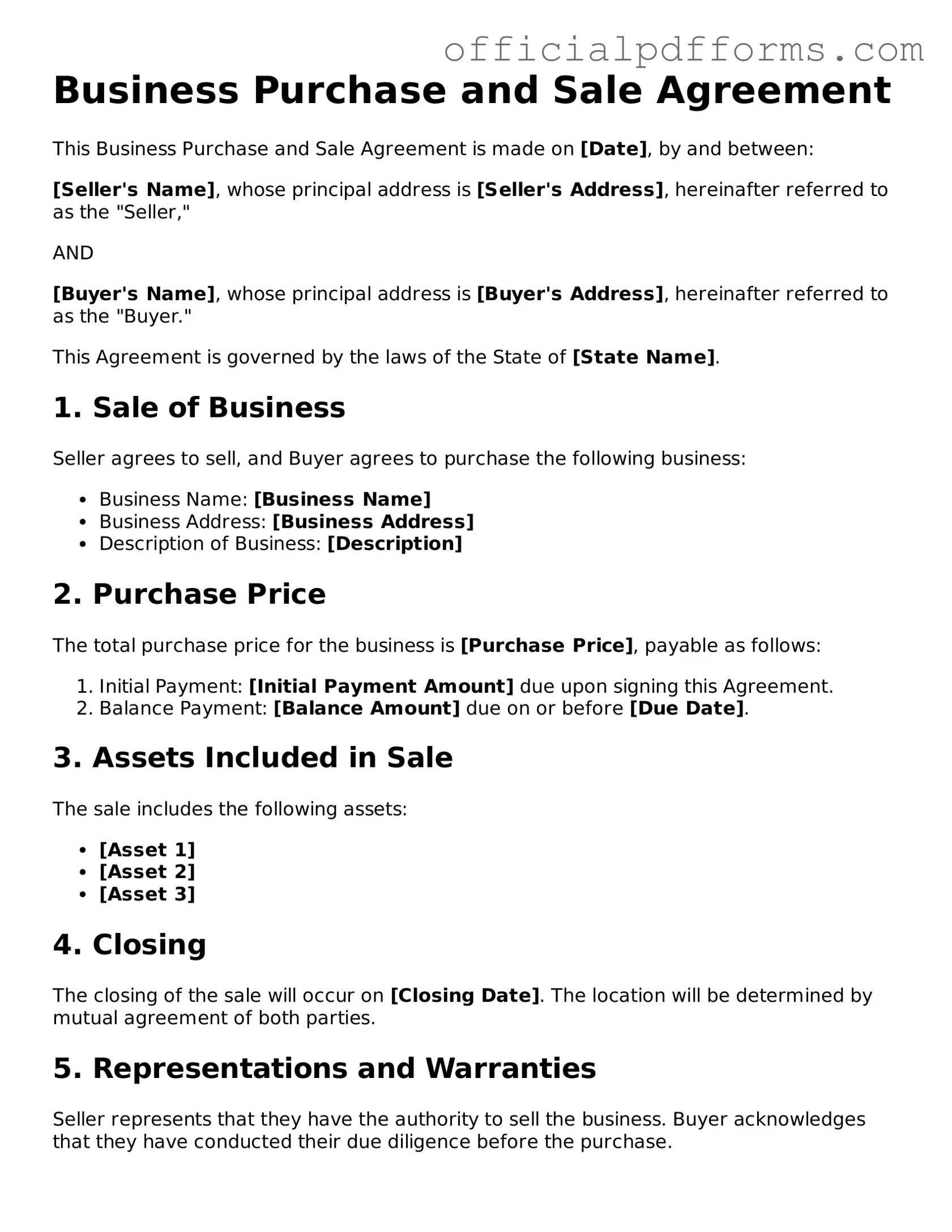What is a Business Purchase and Sale Agreement?
A Business Purchase and Sale Agreement is a legal document that outlines the terms and conditions of a transaction in which one party sells a business to another. It details the assets being sold, the purchase price, and any other relevant terms that both parties must agree upon.
Why is a Business Purchase and Sale Agreement important?
This agreement is crucial because it protects both the buyer and the seller. It helps ensure that all parties understand their rights and obligations. A well-drafted agreement can prevent misunderstandings and disputes after the sale is completed.
What should be included in the agreement?
The following items are typically included in a Business Purchase and Sale Agreement:
-
The names and addresses of the buyer and seller
-
A description of the business being sold
-
The purchase price and payment terms
-
Details about any assets included in the sale, such as equipment or inventory
-
Any liabilities that the buyer will assume
-
Conditions that must be met before the sale can be completed
-
Representations and warranties made by both parties
-
Confidentiality clauses, if applicable
How is the purchase price determined?
The purchase price can be determined through various methods, including negotiations between the buyer and seller. Factors such as the business's financial performance, market conditions, and the value of its assets often play a significant role in setting the price.
Can the agreement be modified after it is signed?
Yes, the agreement can be modified, but both parties must agree to any changes. It is important to document any modifications in writing to avoid confusion later on.
What happens if one party breaches the agreement?
If one party fails to fulfill their obligations under the agreement, the other party may have legal remedies available. This can include seeking damages or, in some cases, enforcing the agreement through the courts. It is advisable to consult with a legal professional if a breach occurs.
Is it necessary to have a lawyer review the agreement?
While it is not legally required, having a lawyer review the agreement is highly recommended. A legal professional can ensure that the terms are fair, compliant with applicable laws, and protect your interests.
How long does it take to finalize the agreement?
The time it takes to finalize a Business Purchase and Sale Agreement can vary. Factors such as the complexity of the transaction, the responsiveness of both parties, and the need for due diligence can all affect the timeline. Generally, it can take anywhere from a few days to several weeks.
